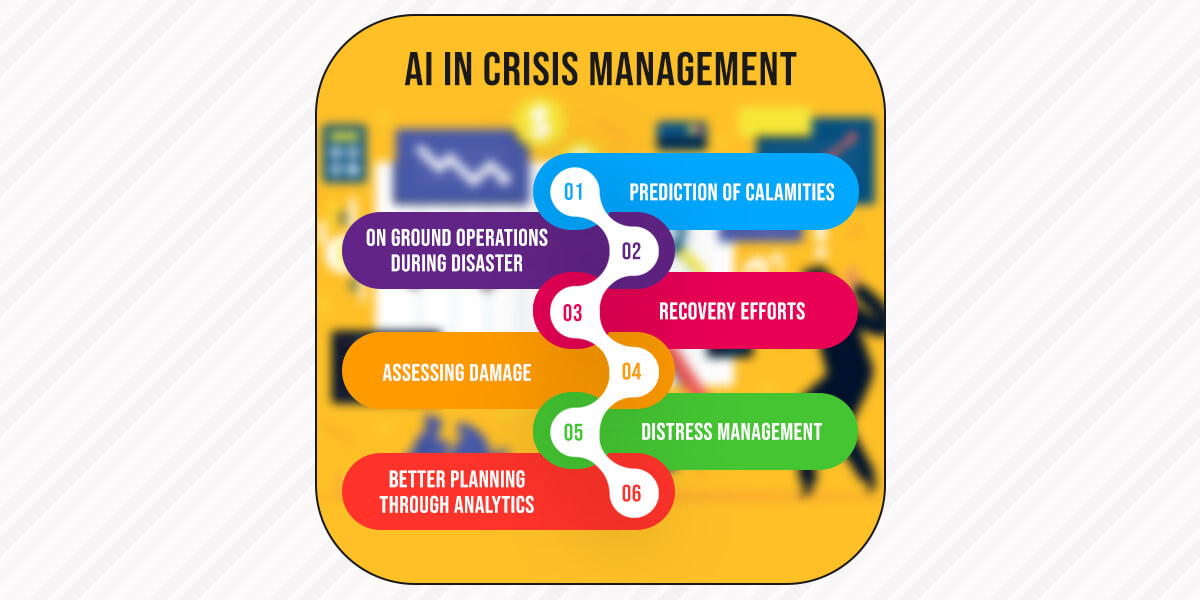Calamities and disasters are part of nature and they cannot be stopped. The calamities cause destruction and disrupt the normal functioning of the human society. Several lives are lost every year due to such calamities such as earthquakes, forest fires, tsunami, floods, etc. But over the years, the application of AI has helped us shape our mitigation strategies effectively.
Mitigation strategy means reducing the risk of loss whenever a calamity occurs. And AI plays a critical role in reducing these risks. AI has developed many predictive based technology which helps to forecast the impending calamity
Over the years, many mitigation strategies have taken a step ahead with the application of artificial intelligence in disaster management. Some of the fields which AI can effectively help you in disaster management are as below:
1- Prediction of Calamities:
With the help of AI, we can increase the capacity to foresee several disasters. Thus, AI helps in preparing for the adverse situations in advance before the calamity strikes. Predicting the disaster is not the only speciality of AI but also sees when and which areas will be affected the most. Having this information helps in decision making.
Google is working with Harvard to develop an AI system to predict the tremors of an earthquake.
2- On ground operations during disasters:
At present rescue operations using AI-based drones or robots make it more efficient and easier to tackle distress situations. People can share live locations of disaster-hit areas and can garner attention at the places that require immediate aid. Also, on social media platforms allow a “Mark safe” option at places where a calamity has happened. With the help of AI, we can locate people at red zones and provide the urgent aid.
3- Recovery efforts:
After a disaster comes the messy part called the Aftermath where certain damages that took place during the disaster must be recovered. Researchers are devising ways to take the help of AI and machine learning to determine the property damage and estimating the value effortlessly.
4- Assessing damage:
Calamities always leave behind a trail of damage everywhere. It is essential to access the damage to check if there is a loss of lives and to estimate the scopes and costs of rebuilding the property that has been damaged. AI algorithms use satellite imagery for assessment of damage is a fine example. Satellite imagery is used frequently to assess damages caused due to forest fires, hurricanes, floods, etc.

5- Distress Management:
Researchers and policymakers are leveraging AI techniques, such as image recognition and classification, analytics, pattern identification, and many more to manage distress situations and guiding us to make better and swift responses. 911 services are upgrading their response mechanisms by making use of machine learning to gather and process more data over a wide area.
6- Better planning through analytics:
AI can aid public safety officials to improve mitigation measures over time, setting clear planning structure and response for the same. Artificial Intelligence can be utilized to analyse any event and chart out the risks involved and plan a response strategy to minimize damage in case of a disaster.
For example, many buildings these days are adept with heat and smoke detectors which would trigger the fire alarm in case of fire and also sprinklers are attached for an immediate response in order to put out the fire, thus minimizing the damage.
Conclusion:
Many start-up firms and scientists are coming up with ways to incorporate AI to save lives when a calamity strikes. Artificial Intelligence has a lot of potential to improve every aspect of our lives and it has a great potential to save our lives when utilized in the right fashion. Sensors, drones, robots, and other AI-powered equipment can help responders and rescue workers to be effective in their operations and also save a lot of time and lives in the process.

